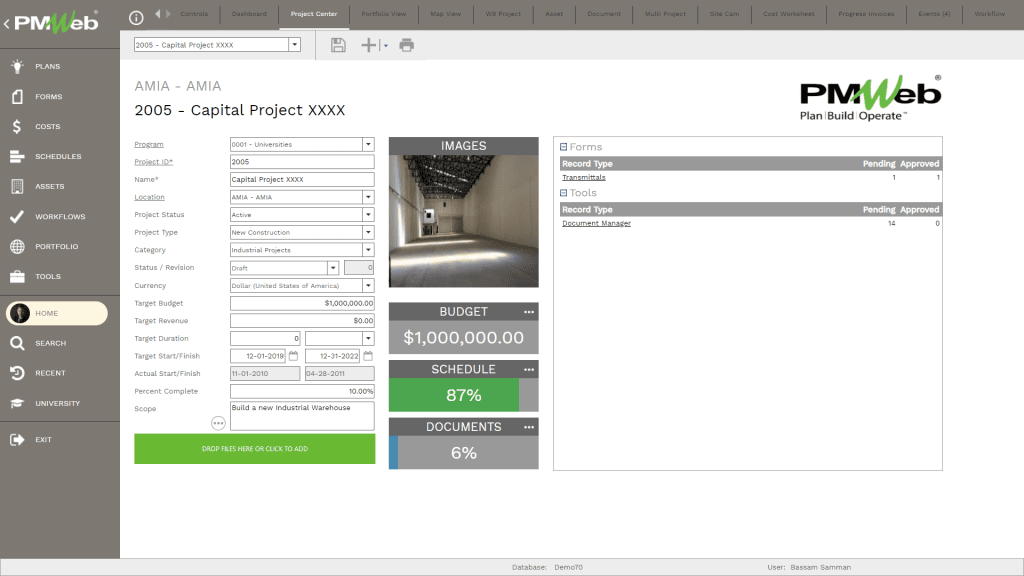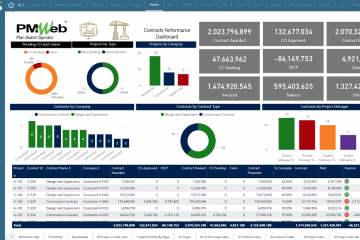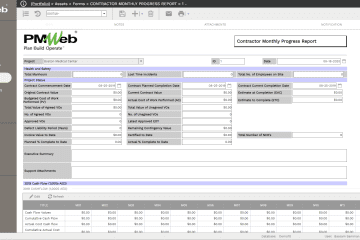The digital transformation for capital construction projects’ delivery requires digitizing all project management processes required to manage the project life cycle phases. Nevertheless, the extent of the digital transformation scope that an organization is willing to undertake could vary from one organization to another. An organization’s decision will usually take into consideration the available budget to spend, the maturity of currently adopted project management processes, organization readiness for digital transformation, availability of resources to manage, and use of the construction project management software among other constraints. Those organizations understand that eventually, they would need to digitally transform their complete project management life cycle processes, but this will only happen when they are ready for it. Initially, those organizations want a solution to digitally transform the processes that are causing them the most pain but at the same time, they want a solution that is capable of digitally transforming all other project management processes, like document management and transmittal management processes, at a later stage when they are ready for it. This is crucial to avoid wasting whatever initial investment they made and wasting the gained knowledge and experience in using the solution.
In general, most organizations involved in delivering capital projects believe that the digital transformation of managing project documents and transmittals will always be on their top priority pain list. Those organizations want to digitally transform those two processes to fulfill the needs of their current and future project portfolio requirements. In addition, the majority of those organizations want a web-enabled solution that is available on the cloud to eliminate the need for any new investment in their Information technology infrastructure. Nevertheless, knowing that their documents and data will be on the cloud, the selected SaaS solution should also comply with their needs for protecting those documents and records. This will require having a dedicated server to store all of their documents and records so they are not a server that is shared with other organizations. Even by selecting the SaaS option, organizations also want to have the option to self-host the solution when they are ready to do so in the future. Finally, those organizations need a solution that they can configure on their own and without the need for paid professional services to enable them to create workflows, forms, reports or dashboards.
PMWeb is one of the Project Management Information Systems (PMIS) solutions that will comply with the above requirements. PMWeb project module screen will be used to capture the details of all projects that will be managed. The PMWeb project input form will be used to capture all needed details about the project including its spatial latitude and longitude attributes, project stakeholders, budget, planned start and finish dates, and the scope of work among others. There is also the option to add additional user-defined fields if this is needed to capture other information not readily available in PMWeb. In addition, pictures of the current project progress status can be uploaded and attached to the project module.
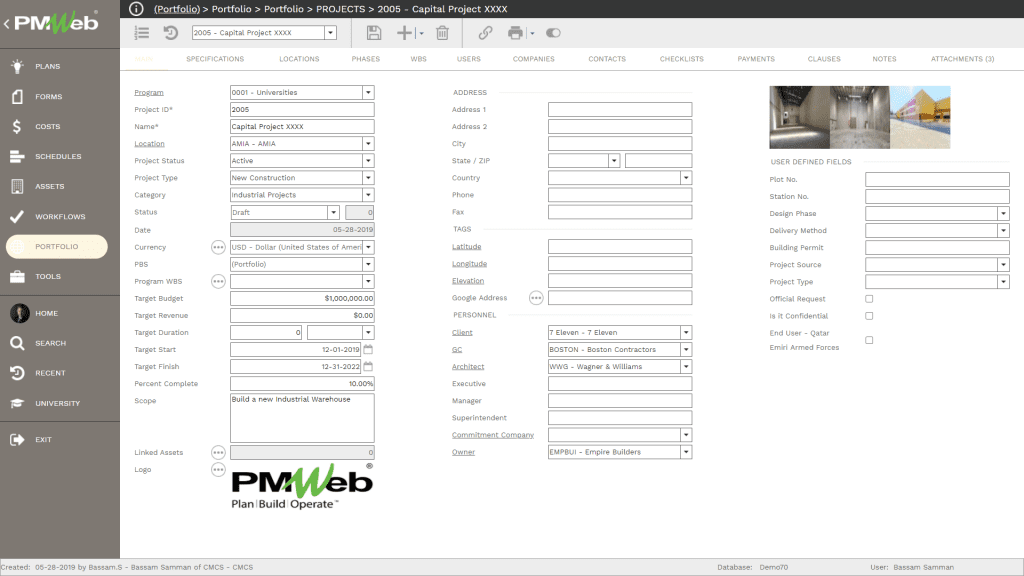
Since every single construction project will have a schedule that to a certain extent drives the decision-making dates on projects, the PMWeb project module allows importing the project schedule details from Primavera P6 or MS Project. The imported data will include the activities planned and actual start and finish dates, original, actual, and remaining duration, percent complete, and total float among others. In addition, it allows importing the logical relationships between the activities. Although this is not a must requirement, nevertheless it will be of great value in driving the decision-making process when it comes to reviewing and approving transmittals.
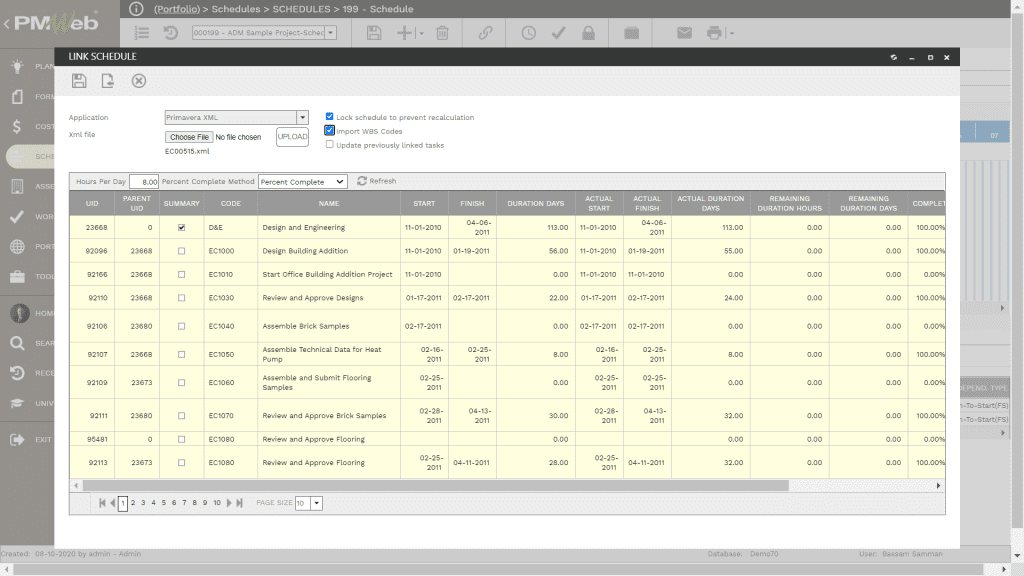
To ensure consistency in managing the different entities who are involved in the delivery of the organization’s capital construction projects, the PMWeb companies’ module will be used to ensure having a single repository of all those companies and the contacts within each company. Those contacts will be the users that could have workflow tasks assigned to them when it comes to reviewing and approving transmittals, uploading documents, and document revisions as well as monitoring and evaluating the transmittal management process. To expedite the processes of having the companies register, PMWeb allows importing the company’s details into the PMWeb database using the MS Excel template.
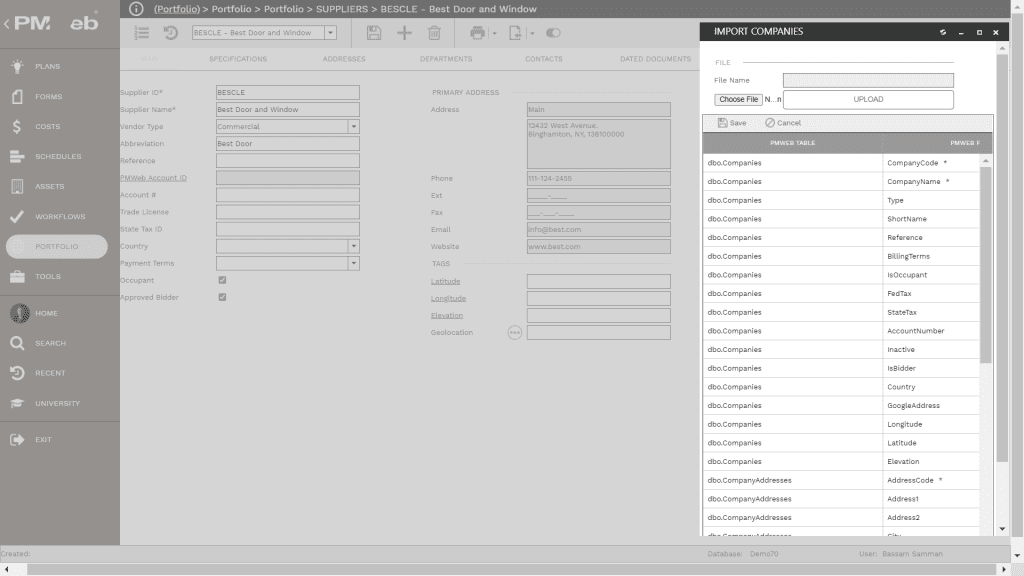
The next step will be to create the document management repository folders and subfolders to match the filing structure adopted for each current project. Of course, it is highly recommended that the filing structure be standardized across the organization’s complete projects portfolio. PMWeb, as a leading construction project management software, allows uploading documents, of different file types, in bulk to each folder. Attributes can be added to each folder to capture additional information if needed for the uploaded documents. Similar to other document management system functions, PMWeb allows checking out and checking in documents to maintain the version history of each document.
To ensure compliance with the organization’s data security policy, access permission rights can be set for each folder or subfolder to restrict access, editing, deleting, and other permission rights. In addition, PMWeb users can subscribe to each folder or subfolder to receive notifications when a new document or version of an existing document is uploaded or when documents are downloaded. Further, uploaded documents can be redlined and marked up using PMWeb viewer.
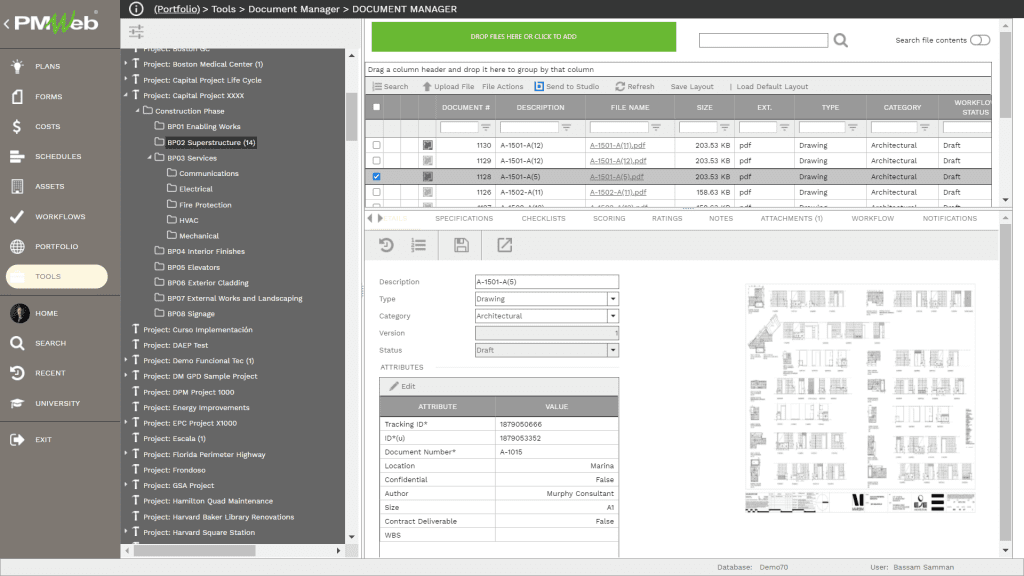
Now we are ready to implement the transmittal management process. The first step will be creating a review and approval workflow for the transmittal management process. Although by definition, a transmittal is a single-direction process, that is it will be sent from one to the attention of someone else, nevertheless assigning a workflow for the transmittal process will eliminate the need to create a new transmittal for sending the response back to the transmittal issuer.
The workflow in PMWeb is capable of defining all tasks needed for the review and approval of the transmittal including the actions for returning and resubmitting the transmittal. PMWeb workflow will enable sequencing the tasks in the required order as well as provide the planned duration for each task. Alerts can be defined for delayed workflow steps.
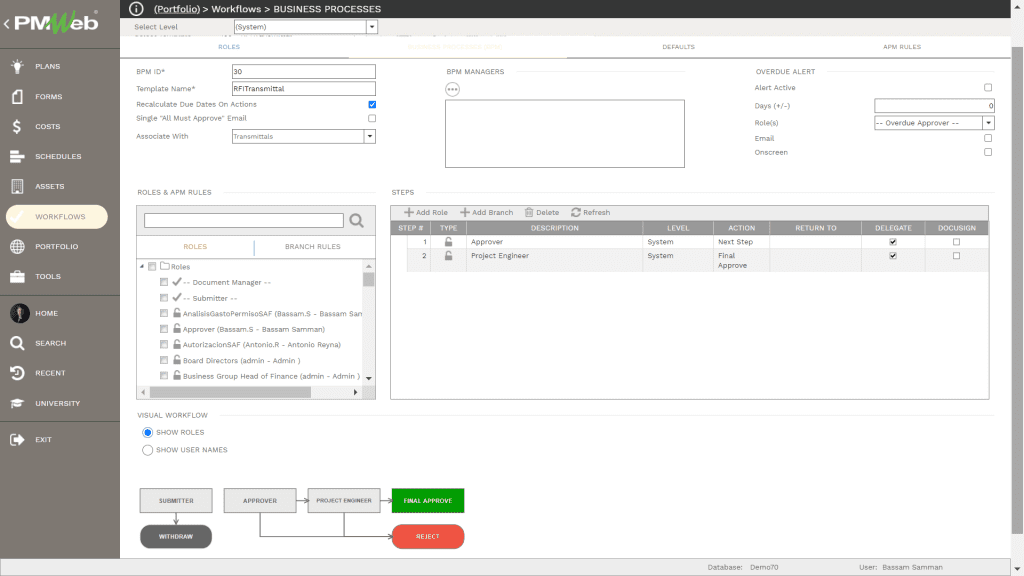
Since the records and documents that will be part of the transmittal process could be different types of submittals such as shop drawings, as-built drawings, material samples, and method statements among others as well as different reasons for the request for information such as design coordination, construction coordination, constructability issues among others, PMWeb workflow allows adding conditions to the workflow to ensure that the right project team members get involved in the review and approval process. The transmittal category field will be used to capture all possible transmittal types so PMWeb can automatically select the relevant workflow.

This leads to the last PMWeb module needed to fulfill the organization’s initial digital transformation requirement, which is the PMWeb Transmittal module. The module comes ready with all needed fields that are common to transmittals including the project phase, transmittal category, and WBS fields. In addition, new user-defined fields can be added to the transmittal module to capture other needed information like for example the project schedule activity that could be impacted if the transmittal is not approved by the given due date.
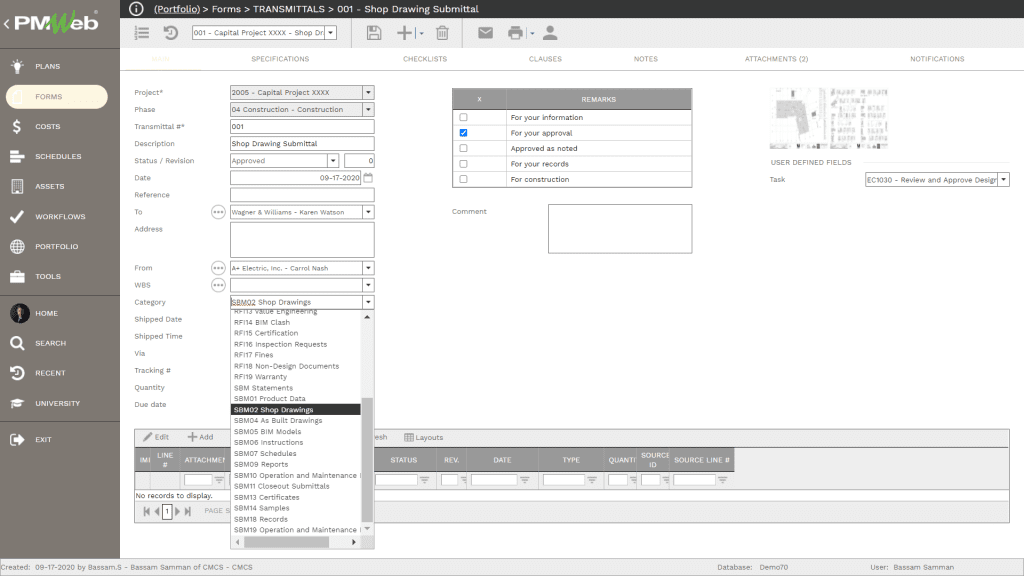
Similar to all other PMWeb modules, the attachment tab will be used to attach all documents to be transmitted. Usually, those documents are pre-loaded in the PMWeb document management repository or they can be uploaded directly into the transmittal. Although no other PMWeb records will be used in this initial PMWeb implementation no MS Outlook emails will be imported into PMWeb, nevertheless, if this was done, then those records and emails could have been linked to transmittals.

To start the review and approval process of the transmittal by the designed workflow, the transmittal initiator needs to submit the transmittal. PMWeb workflow will send email notifications plus onscreen notifications to the users who are next in the workflow sequence. The assigned user to the workflow step needs to review the transmittal and provide the needed input with the option to invite other team members to provide their input. The same notification process will be repeated after the completion of each workflow step with all details captured on the workflow tab of the transmittal.
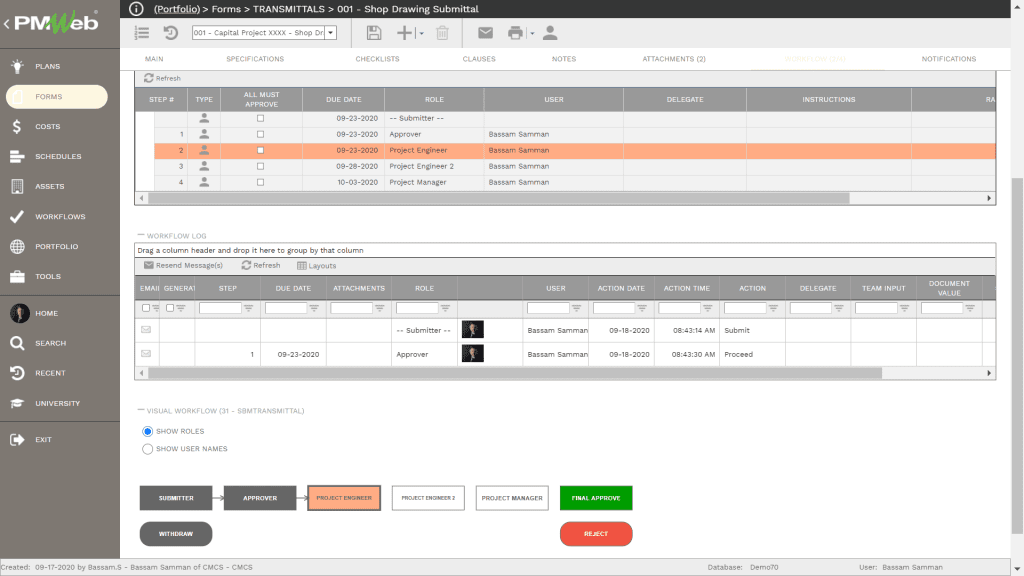
By having the automated workflow assigned to the transmittal module, PMWeb ready to use the Workflow Inbox report will provide a real-time status of all workflow tasks showing tasks that are delayed or past due, due, and yet to become due. The workflow tasks can be grouped by project, user, or even the project management process which will be only meaningful if processes other than transmittal management are being managed using PMWeb.
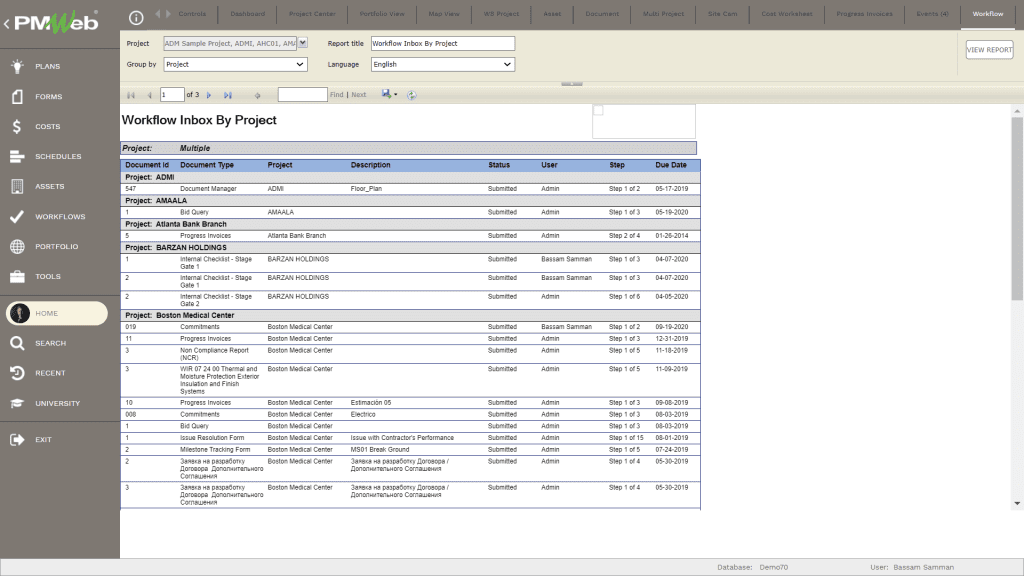
In addition to the option of having workflow assigned to the transmittal, the transmittal can be also shared with other individuals, who are either authorized PMWeb users or not via email. This will be done by using the PMWeb notification option where a copy of the transmittal output can be attached to the notification email. The notification email has pre-defined fields for status, notification type, response due date, and whether the notification is issued as a reminder among others. The details of all notifications issued for each transmittal will be recorded on the notification tab of the transmittal form.
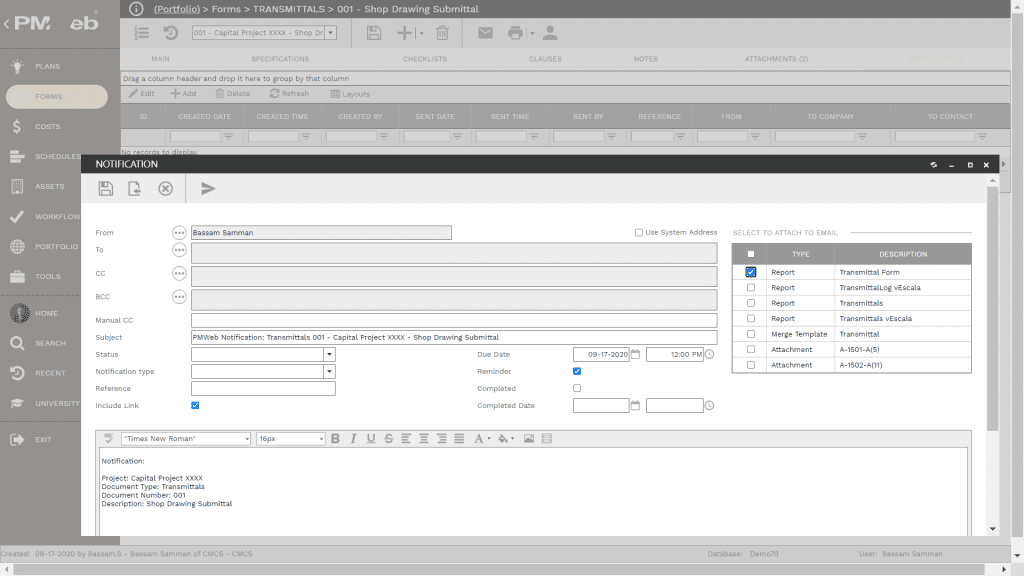
Should there be a need to have a printed or electronic PDF output of the transmittal form, PMWeb, a leading construction project management software, has a ready-to-use predesigned transmittal output form with the captured details. The logo on the form will be automatically replaced with the logo added to the project module when it was added. The organization can also customize the output form to meet their branding requirements as well as display other needed information.
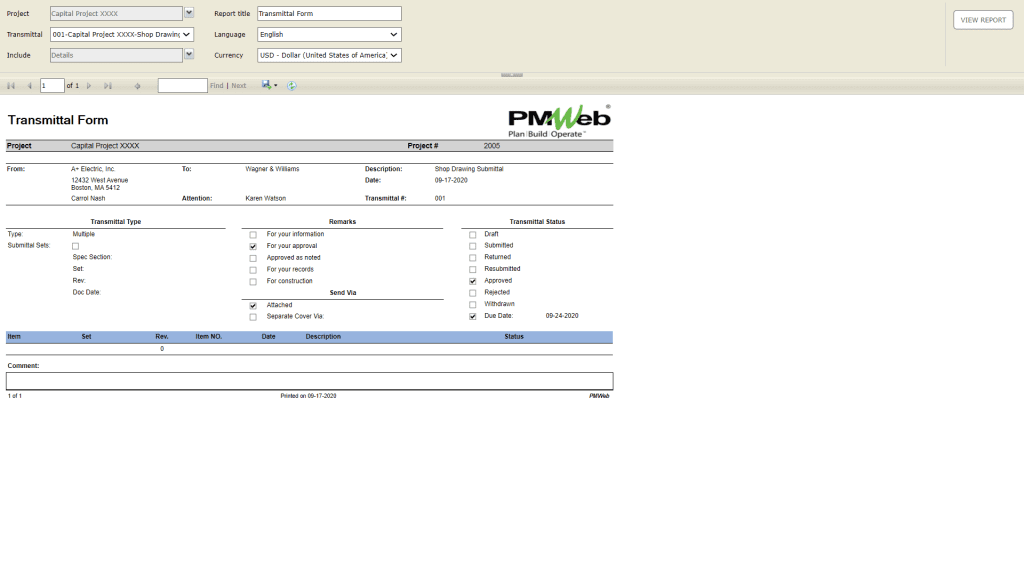
Similarly, PMWeb comes ready with a transmittal register that can be printed, saved as PDF, saved as MS Excel files as well as email. The logo on the report will be automatically replaced with the logo added on the project screen. In addition, the organization can customize the output report to meet their branding requirements as well as display other needed information including visuals to summarize the transmittals by category, status, and WBS among others. The transmittal register report can be for a single project or a selection of projects depending on the reporting requirements. The Transmittal Register will become the reports that can be accessed directly from the PMWeb landing page similar to the Workflow Inbox report explained above and the Project Center page detailed next.
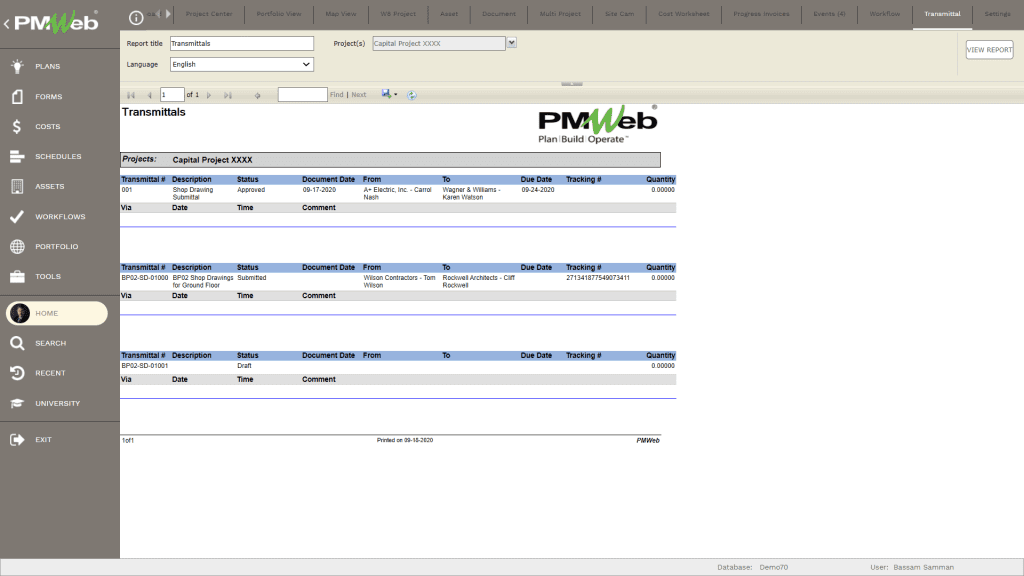
PMWeb Project Center, which can be configured by each user if needed, will provide a single page for managing documents and transmittals. The project will provide overall details on the project including the latest attached progress photographs which can be uploaded directly from the project center screen and the project completion date which will be picked from the imported Primavera P6 or MS Project Schedule.
The project center will also provide an overall summary of project documents and transmittals status for which when the user clicks on either document management or transmittal, PMWeb will open the selected module. The project center can be configured to display other PMWeb modules when they are implemented.
